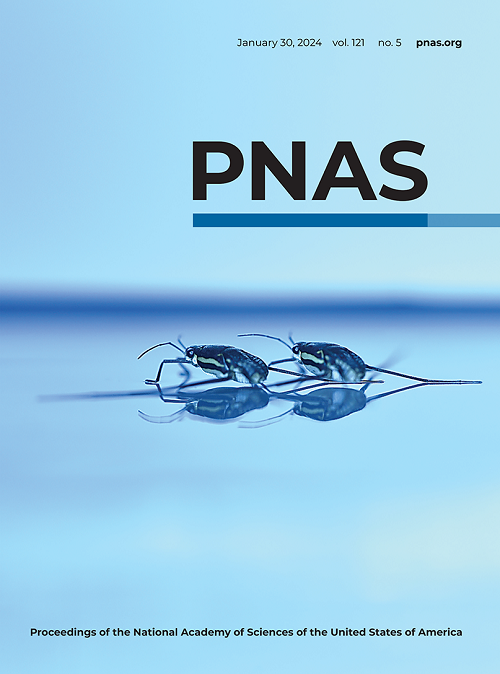Diploidization in a wild rice allopolyploid is both episodic and gradual.
IF 9.4
1区 综合性期刊
Q1 MULTIDISCIPLINARY SCIENCES
Proceedings of the National Academy of Sciences of the United States of America
Pub Date : 2025-06-26
DOI:10.1073/pnas.2424854122
引用次数: 0
Abstract
Polyploid organisms evolve from their initial doubled genomic condition through a number of processes collectively termed diploidization, whose tempo and mode remain poorly understood mainly due to the difficulty of discriminating de novo evolution subsequent to polyploidy from variation inherited from progenitors. Here, we generated chromosome-scale genome assemblies for the wild rice allopolyploid Oryza minuta and its two diploid progenitors, Oryza punctata and Oryza officinalis, and employed a population genomic approach to investigate the diploidization process in O. minuta at the sequence and transcriptomic level. We show that this wild rice allopolyploid originated around 0.7 Mya, and during subsequent diploidization, its two subgenomes have retained highly conserved synteny with the genomes of its extant diploid progenitors. This populational approach allowed us to distinguish parental legacy of inherited variation from postpolyploidy evolution, and our analyses revealed that whereas gene fractionation occurred in an early burst, accumulation of transposable elements (TEs) and homoeologous exchanges has been gradual. Patterns of homoeolog expression bias are highly variable across tissues, with no consistent subgenome expression bias. Our assessments of the impact of DNA methylation, TE distribution, and parental legacy on expression patterns provide some support for the TE load theory (the theory that the TE densities in flanking regions surrounding genes strongly influence expression levels), while also illustrating the complexity of transcription regulation.野生水稻异源多倍体的二倍体分化是偶发性的和渐进的。
多倍体生物通过一系列统称为二倍体化的过程从其最初的双倍基因组条件进化而来,其速度和模式仍然知之甚少,主要是由于多倍体随后的从头进化和从祖先遗传的变异难以区分。本研究对野生水稻异源多倍体米米(Oryza minuta)及其2个二倍体祖先米米(Oryza punctata)和米米(Oryza officinalis)进行了染色体尺度的基因组组装,并采用群体基因组学方法在序列和转录组水平上研究了米米的二倍体化过程。研究表明,该野生水稻异源多倍体起源于约0.7万年前,在随后的二倍体分化过程中,其两个亚基因组与其现存二倍体祖先的基因组保持高度保守的同源性。这种种群方法使我们能够将遗传变异的亲本遗传与多倍体后进化区分开来,我们的分析表明,虽然基因分离发生在早期爆发中,但转座因子(te)的积累和同源交换是渐进的。同源表达偏倚的模式在不同组织中是高度可变的,没有一致的亚基因组表达偏倚。我们对DNA甲基化、TE分布和亲本遗传对表达模式的影响的评估为TE负载理论(基因周围侧翼区域的TE密度强烈影响表达水平的理论)提供了一些支持,同时也说明了转录调控的复杂性。
本文章由计算机程序翻译,如有差异,请以英文原文为准。
求助全文
约1分钟内获得全文
求助全文
来源期刊
CiteScore
19.00
自引率
0.90%
发文量
3575
审稿时长
2.5 months
期刊介绍:
The Proceedings of the National Academy of Sciences (PNAS), a peer-reviewed journal of the National Academy of Sciences (NAS), serves as an authoritative source for high-impact, original research across the biological, physical, and social sciences. With a global scope, the journal welcomes submissions from researchers worldwide, making it an inclusive platform for advancing scientific knowledge.

 求助内容:
求助内容: 应助结果提醒方式:
应助结果提醒方式:


